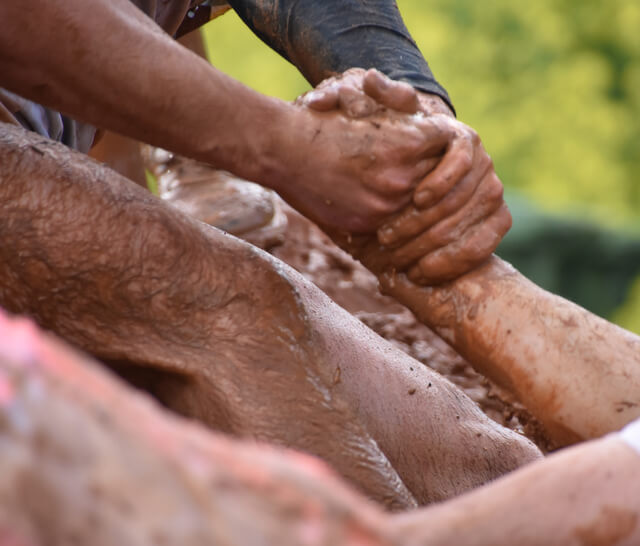Are you getting that sinking feeling? It may not be just anxiety, you might have stepped on quicksand.
Quicksand is loose, fine soil that’s saturated with water and may appear solid until it’s abruptly disturbed by changes in the environment and it liquefies. Quicksand can usually be found near bodies of water like rivers and lakes, and some of them can even “move around” depending on different conditions.
While it isn’t usually as dangerous as you may think, being in one can still be panic-inducing. But don’t worry, here are a couple of steps that you can take so you can try to extract yourself from one.
1. Keep Calm
While it can be frightening, panicking will only unnecessarily drain you and put you in a much worse situation. Sudden big movements will also disturb the soil underneath you more and get you stuck even deeper. So the first step is to keep calm, resist the urge to flail around, and act fast.
2. Take a Step Back
If you still can, take a couple steps back to solid ground. Do not take big steps forward—while you may be able to get one of your feet free, lunging steps will use up too much energy and sink your other foot deeper into the hole and take you farther away from solid ground. In the process, you may have to ditch your shoes, but it’s better to lose them than sink any deeper.

3. Lighten Up
If you’re in too deep, like knee-deep, and taking a step back is too difficult and isn’t an option anymore, ditch the backpack and whatever loose articles you might have on you and throw them to the side. The less weight on you, the slower you’ll sink and the easier it will be to get out.
Quicksand is denser than water, and the human body is much less dense than quicksand. This means that it’s highly unlikely for you to be completely submerged in quicksand.
However, just because you can’t drown in it doesn’t mean it can’t be fatal. While rare, there have been documented cases of people dying from being stuck in quicksand.
The danger of being stuck in quicksand is in exposure to the elements or drowning once the tide rises and the water completely engulfs you if you’re unable to extract yourself in time. Being stuck in quicksand can also put too much pressure on the body, much like being crushed, and may induce discomfort, exhaustion and even nerve damage.
4. Spread out
If you have a walking stick or a trekking pole with you, this is a good time to use it. Lay it horizontally behind you and slowly lean back and set yourself on top of it. The pole will help keep you from sinking by stabilizing you.
If you don’t have a stick or a pole with you, you can slowly lean back to spread your weight around. With your weight distributed more evenly, you’ll sink slower and at the same time provide you an opportunity to free up and raise your legs from the mud. Slowly wiggle your feet to increase the space for water around them. With more water than soil, you’ll be able to move your feet more easily until you can free them.

5. Slowly and Surely
Once you can move your feet more freely, slowly paddle yourself on your back to “shore”. Remember, when dealing with quicksand, “slowly, but surely” is key.
It may take you from a couple of minutes to an hour or more to safely extract yourself from the situation you’re in, but taking it slowly is the safest way. Freaking out or rushing it can disturb the loose ground you’re in even further and push your body deeper into the muck, making extraction more difficult. Once you’re free, clean up and use a different, more inland route to your destination.
How to avoid quicksand
While there’s a way to get out of quicksand, it’s better to not take any chances and avoid being sucked in altogether.
Be wary of places where groundwater can mix with sandy soil such as swamps, marshes and tidal flats. Quicksand can also occur where underground springs are common or places where the water underground seeps upwards.
A walking stick can be handy in the early detection of quicksand (aside from its many other uses). Use your walking stick to test the ground in front of you as you’re walking in a place where quicksand is most likely to occur.


